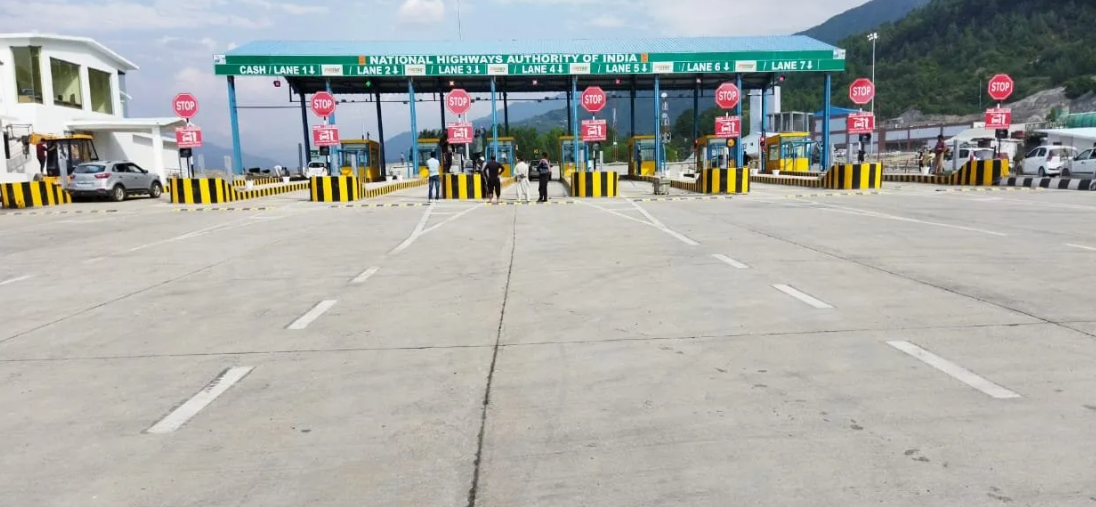The Amarnath Yatra is a revered pilgrimage undertaken by devotees to the sacred Amarnath Cave, nestled in the Himalayas of Jammu and Kashmir. The Amarnath Yatra trek to the holy cave can be done via two routes: the 36km Pahalgam route or the shorter 14km Baltal route. This guide provides an in-depth overview of Amarnath Trek Distance of the traditional route from Jammu to the Holy Cave via Pahalgam, detailing each segment to assist pilgrims in their spiritual journey.
Amarnath Yatra Trek: Detailed Breakdown
1. Routes & Distances
Pahalgam Route
- Starting Point: Pahalgam
- Total Distance: Approximately 47 kilometers (29 miles)
- Duration: Typically 3-4 days
- Key Stops: Chandanwari, Sheshnag, Panchtarni
- Scenery: Lush green forests, alpine meadows, streams, waterfalls, and snow-capped mountains
Read also: Amarnath Yatra 2025: Dates, Routes, Registration, and Essential Information
Baltal Route
- Starting Point: Baltal (near Sonamarg)
- Total Distance: Approximately 14 kilometers (8.7 miles)
- Duration: Can be completed in a day, but typically takes 2-3 days
- Key Stops: Domial, Barari, Sangam
- Scenery: Breathtaking landscapes, rivers, and glaciers
2. Yatra Itinerary (Pahalgam Route)
- Day 1: Travel from Jammu or Srinagar to Pahalgam
- Day 2: Trek from Pahalgam to Chandanwari (16 km)
- Day 3: Trek from Chandanwari to Sheshnag (14 km)
- Day 4: Trek from Sheshnag to Panchtarni, then to Amarnath Cave, and return to Panchtarni
- Day 5: Trek from Panchtarni to Baltal (9 km), then drive to Sonamarg (15 km)
- Day 6: Travel from Sonamarg to Srinagar
This structured itinerary provides a clear guide for pilgrims undertaking the Amarnath Yatra via the traditional Pahalgam route.
Journey from Jammu to Pahalgam
Distance: Approximately 315 kilometers
Transportation: Taxis and buses are available at the Tourist Reception Centre, J&K Government, Raghunath Bazaar, departing early in the morning. Alternatively, pilgrims can fly to Srinagar and proceed to Pahalgam by road.
Pahalgam: The First Base Camp
Altitude: 7,200 feet
Description: Situated 96 kilometers from Srinagar, Pahalgam is renowned for its breathtaking landscapes, flanked by the Lidder and Aru Rivers and majestic mountains. Pilgrims can find accommodations in various hotels, and non-governmental organizations set up free Langars (food kiosks) at the Nunwan Yatri Camp, located 6 kilometers before Pahalgam. It is customary for pilgrims to spend their first night here.
Distance from Pahalgam to Chandanwari
Distance: 16 kilometers
Altitude: 9,500 feet
Transportation: Mini buses operate from Pahalgam to Chandanwari, following a scenic trail along the Lidder River. Numerous Langars offer sustenance to the Yatris along this route.
Ascent to Pissu Top
Distance from Chandanwari: 3 kilometers
Altitude: 11,000 feet
Description: The trek from Chandanwari to Pissu Top is steep and challenging. Legend has it that a battle between Devtas and Rakshas occurred here to determine who would first have the darshan of Lord Shiva. The Devtas, empowered by Shiva, vanquished the Rakshas, and the heap of their bodies is believed to have formed this high mountain.
Read also: Shri Amarnath Yatra 2025 – Helpline and Contact Information | Amarnath Yatra Helpline Number
Journey to Sheshnag
Distance from Pissu Top: 11 kilometers
Altitude: 11,730 feet
Description: Sheshnag is named after a mountain with seven peaks, resembling the heads of the mythical serpent. Pilgrims camp here on the second night, overlooking the deep blue waters of Sheshnag Lake and surrounding glaciers. The serene environment and associated legends enhance the spiritual experience.
Crossing Mahagunas Pass to Panchtarni
Distance from Sheshnag to Mahagunas Pass: 4.6 kilometers
Altitude at Mahagunas Pass: 14,000 feet
Distance from Mahagunas Pass to Panchtarni: 9.4 kilometers
Altitude at Panchtarni: 12,000 feet
Description: The trek involves a steep ascent to Mahagunas Pass, followed by a descent to the meadows of Panchtarni. Pilgrims are advised to carry adequate woolens and protective items against harsh winds. Some may experience altitude sickness; carrying dry fruits and sour edibles like lemons can help alleviate symptoms. Medical posts are available for assistance. Panchtarni, situated at the base of Bhairav Mount, is where five rivers are believed to originate from Lord Shiva’s locks. Pilgrims camp here on the third night.
Final Leg to the Holy Cave
Distance from Panchtarni to Sangam: 3 kilometers
Altitude at Sangam: 13,000 feet
Distance from Sangam to Holy Cave: 3 kilometers
Altitude at Holy Cave: 13,500 feet
Description: En route to the Holy Cave, pilgrims encounter the confluence of the Amravati and Panchtarni rivers. Many choose to bathe here before proceeding for darshan. Inside the cave, apart from the main Shivling, there are two smaller formations representing Maa Parvati and Shri Ganesh. After an early darshan, it is feasible to return to Panchtarni the same day.
Amarnath Yatra Distance: Altitude, Distance, and Time Chart
The following table provides an overview of the key segments of the amarnath yatra distance :
| Starting Point | Destination Point | Distance (km) | Altitude (ft) | Estimated Time (hrs) |
|---|---|---|---|---|
| Pahalgam | Chandanwari | 16 | 9,500 | 0.5 |
| Chandanwari | Pissu Top | 3 | 11,000 | 1 |
| Pissu Top | Sheshnag | 11 | 11,730 | 4 |
| Sheshnag | Mahagunas Top | 4.6 | 14,000 | 2 |
| Mahagunas Top | Panchtarni | 9.4 | 12,000 | 4 |
| Panchtarni | Sangam | 3 | 13,000 | 1.5 |
| Sangam | Holy Cave | 3 | 13,500 | 1 |
Note: Times are approximate and can vary based on individual pace and weather conditions.
Amarnath Yatra Distance
To visualize the journey, the following image outlines the traditional route from Pahalgam to the Holy Cave:

Read also: Amarnath Yatra Helicopter Booking 2025: How to Book, Prices, and Services
Important Considerations for Pilgrims
- Acclimatization: Gradual acclimatization is crucial to prevent altitude sickness. Spend adequate time at each stop to adjust to the elevation.
- Health Precautions: Stay hydrated, consume light meals, and avoid alcohol and caffeine. If symptoms of altitude sickness occur, descend immediately and seek medical assistance.
- Clothing: Carry sufficient woolens, rain gear, and sturdy footwear to navigate the varying weather conditions and terrains.
- Registration: Ensure proper registration and obtain necessary permits before commencing the Yatra.
- Environmental Responsibility: Maintain the sanctity of the pilgrimage by avoiding littering and respecting local customs and guidelines.
Embarking on the Amarnath Yatra via the traditional Pahalgam route is a spiritually enriching experience, offering devotees not only the darshan of the sacred Shivling but also an opportunity to immerse themselves in the serene beauty of the Himalayas.
















